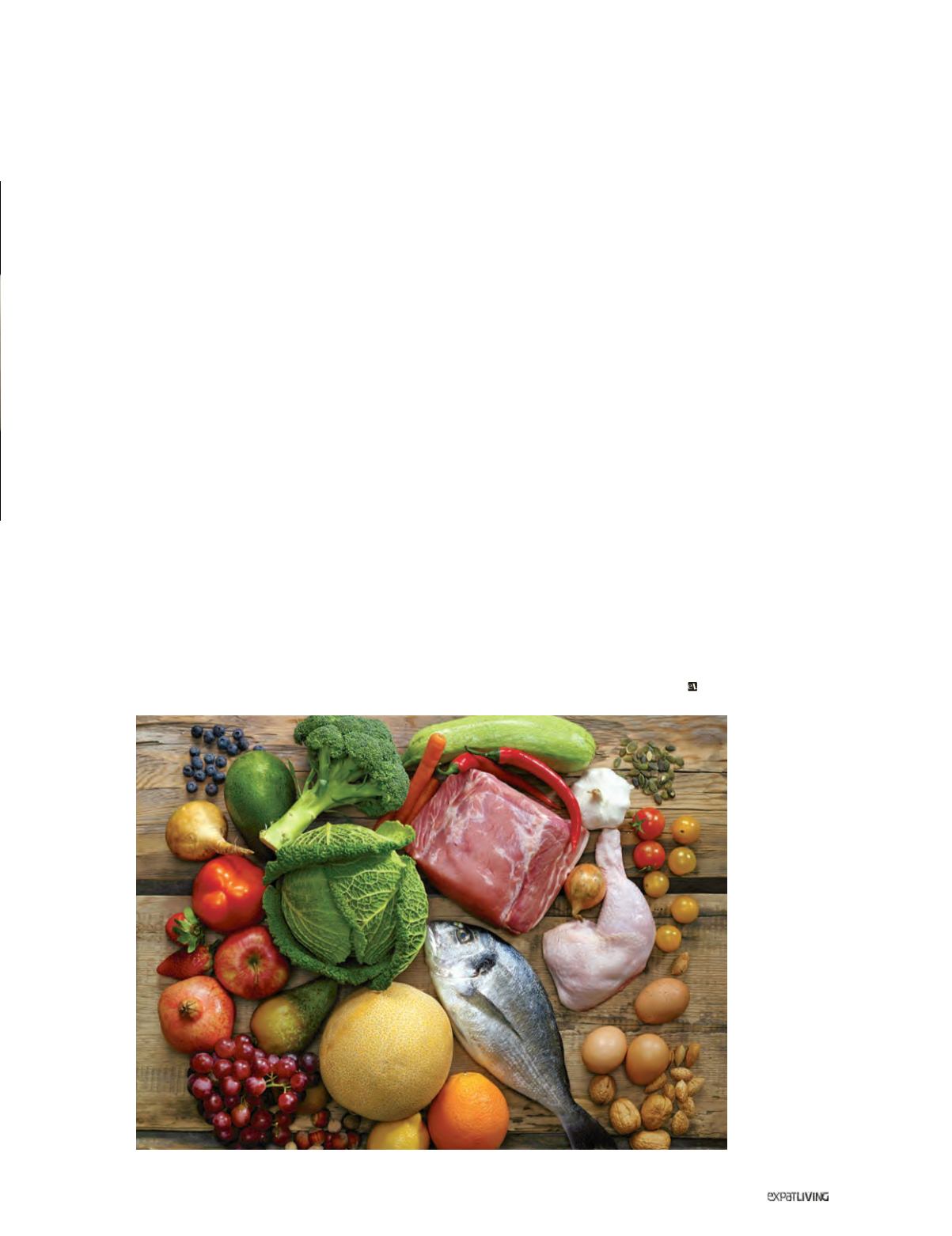

NUTRITION
299
May15
What do you think of the paleo or
“caveman” diet for someone who
wants to get into fantastic shape?
Based on the foods available to our
paleolithic ancestors up to around
10,000 years ago – largely meat, fish,
fruit, nuts and vegetables, the paleo diet
can be a very useful way to move people
away from calorie-dense food devoid of
nutrients and towards whole foods rich
in vitamins, minerals and fibre. Any diet
that promotes better baseline eating
habits can’t be all bad.
The premise of the paleo diet is
slightly kooky, however, and is the
source of much derision and mirth
in certain circles of the online fitness
community. Critics say that the diet
unfairly demonises tubers, legumes,
g ra i ns and da i r y, wh i ch many
populations have thrived on historically
and continue to thrive on today.
For most people, a paleo-type diet
would be a major step forward in terms
of health, but there’s no guarantee that
it will improve either body composition
or performance. The main problem is
in the interpretation of paleo principles:
instead of sticking to largely meats and
vegetables, with the odd handful of raw
nuts, they turn it into one long binge of
paleo treats. Ironically, a muffin made
with almond flour is far higher in calories
than a regular muffin. Calories do count!
– and while we don’t want to obsess
over them, we should acknowledge their
importance for fat loss.
At UP Fitness, we typically advocate a
high protein, moderate fat and low carb
diet for our clients – not necessarily
paleo. If they present with digestive
issues, we might avoid gluten and dairy.
In your experience, how difficult
do people find it to switch to such
a diet?
They often have initial reservations about
eating more protein and including a
higher proportion of fat in their diet. Fats
have been wrongly demonised for the
past two or three decades, so it can be
a tough sell when we ask people to eat
egg yolks and avocado.
Our recommended diet is only difficult
for people who fail to adequately prepare
for it: they can no longer rely on the
convenience of grabbing a Starbucks
meal or a sandwich for lunch. Fortunately,
there are myriad restaurants that cater
well to this type of eating plan. The
challenge lies in educating our clients
in how to make smart choices wherever
they find themselves – be it at home, in
the supermarket or at a client lunch.
What is carbohydrate cycling, and
who would you recommend it for?
Carbohydrate cycling is simply matching
the quantity of carbohydrate you
consume with your activity level. It’s not
rocket science: if you consume more
carbohydrates on training days than
on off-days, then you are carb-cycling.
A more sophisticated version of carb-
cycling might be to have high-carb days
when you train your weakest body parts,
medium carbs when you’re training
more demanding body parts such as
back and legs, and then low-carb days
the rest of the week.
Do you recommend supplements
to your clients?
Yes, and on a case-by-case basis. Most
people would benefit from taking a
high quality fish oil, a good multivitamin
and a probiotic. Beyond that, we might
suggest specific supplements for
blood sugar management, sleep and
digestion.
UP Fitness
20 Cecil Street
6536 8649 |
upfitness.com.sgMarazem | Dreamstime.com



















